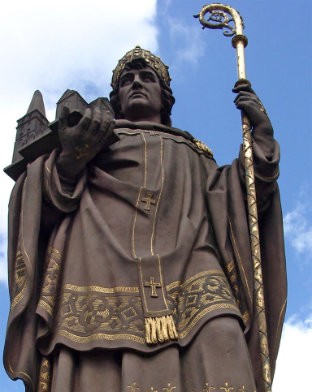Discovering the saints: A church meets a cloud of witnesses

In the underrated film drama Into Temptation, a priest preaches to the small, stoic congregation of St. Mary Magdalene on the feast day of a St. Cyril, who lived a life of complete chastity, poverty and sobriety. “It’s no wonder the Irish didn’t adopt him,” Father John jokes. He goes on to mention some of the more obscure saints he’s drawn to. Has anyone heard of St. Hubert the Silent or St. Richard the Whoremonger? “I’m not making this up,” the priest tells his congregants, to the proverbial sound of crickets chirping.
It’s a familiar enough scene to any preacher who has tried to bring the living witness of the ancient faithful into the historically amnesiac present. So I hesitated when Dawn Mass, my senior colleague, suggested that we devote a ten-week sermon series to some of the prominent saints of church history. My seminary education gave me great love for the patristic and medieval theological worlds, but my pastoral experience has left me wary of trying to make Athanasius’s prickliness come alive in a sermon. Would anyone find this interesting? Would it feel like a history lesson?
Yet it was hard to resist. It is often said that Protestants have an “ecclesial deficit,” and this is never more evident than in times of actual or potential schism. For us Lutherans, there is no way to supplement that deficit without embracing our catholic and international heritage beyond and between Paul, Augustine, Luther and modern-day North America. My congregation’s tendency—and not its alone, to be sure—has been to confine itself to what Paul Tillich called the “leaping theory of Protestantism,” and this needed some filling in.




